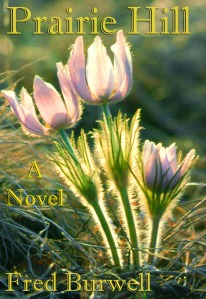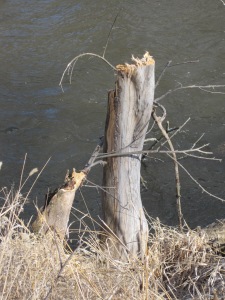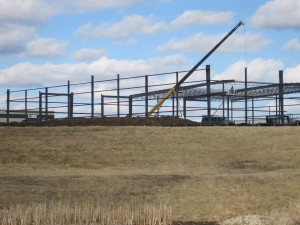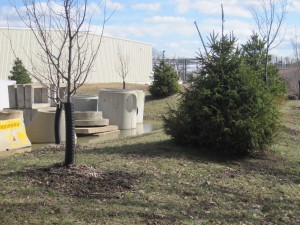My novel, Prairie Hill, is available for free on Amazon.com Thursday and Friday, October 25 and October 26.
Click on the cover photo or the link above to find reviews, further information, and to purchase the book. Amazon Prime members may also borrow the book for free even after the two-day promotion. Prairie Hill is also available at the UK and other Amazon sites.
The excellent website, Free Kindle Books and Tips featured Prairie Hill today: Free Kindle Books and Tips
Prairie Hill description:
In 1980, a troubled young stranger arrives in Prairie Hill, a small Wisconsin city. Jimmy Lathrop would like nothing better than to go about his business washing dishes at the popular local eatery, the Pullet Surprize. A fresh start. No questions asked. Then he begins moonlighting as the feathered mascot of the local minor league baseball team and meets someone who will change his life.
Jenny Diggles bides her time serving the locals at the Pullet Surprize, struggling to come to terms with her lonely, eccentric mother, Lila. Should she chuck it all and marry Lance Kilgore, the ambitious general manager of the Cobb Kernels baseball team? Jenny’s passion for prairies and heirloom plants as well as her deepening friendship with Jimmy Lathrop lead to self-discovery.
With its atmospheric backdrop of threatened tall grass prairie and a soon to be abandoned historic baseball stadium and through its cast of colorful, quirky characters, Prairie Hill explores themes of redemption and love.
Below is an excerpt from Prairie Hill, featuring Jimmy Lathrop and Jenny Diggles meeting with their friend the old farm woman, Hulda Bjorklund, at her home.
Jenny
Hulda ushered me and Jimmy into her ramshackle farmhouse and plopped us down on a wood bench behind the kitchen table. “I baked us two kinds of bread,” she said, “wheat and white. Try the honey on the wheat and the jam on the white.”
She plunked down a couple of sticky looking jars. The honey was thick and dark gold, almost brown, and spread on with bits of honeycomb still floating in it, reminding me of ferns in amber. I looked over at Jimmy, who’d tasted some and had a strange look on his face, like he’d seen a ghost. I turned back to Hulda. “I never had honey like this before,” I said.
“From last year,” she said, pushing the jar toward me. “Pile it on. There’s more jars. Still got me a couple beehives and them bees make me honey for the table and wax for candles. Daddy used to keep bees and he taught me how. That honey’s got a lot of clover in it of course, but the bees add in some from the Catalpa trees out back, which gives it that flavor and color. The jam’s from last year’s strawberry patch.” She poured us some lemonade.
“From last year’s lemons,” I said, catching Jimmy’s eye.
Hulda pushed Jimmy’s shoulder and pointed a finger at me. “That girl’s the dickens only most people don’t have a clue.” I was trying to figure out what was so different about Hulda today. More relaxed and not so tired from pushing a mop and making beds, I guess. But then I realized I’d never seen her out of her light blue polyester work suit. She wore a shiny blouse patterned with sunflowers, and knit pants, and she padded around in fluffy red slippers. “You all alone in this house?” I asked and at that moment heard a loud bark, which made us all laugh.
“That’s Ollie wanting to be let in. He’d like to join us I expect.” She stood up. “Yeah, it’s a big rambling old place. Grandpa added on to it when his family grew. He was a tough old buzzard and every one of his kids skedaddled except Daddy, who took over the farm. He and Ma only had me and my brother Emil and that boy left home when he was in his twenties. Emil never cottoned to farming the way I did and Daddy always said I shoulda been born a boy. I worked the farm with Daddy and what help we could afford until he got too old and we just sold off parcels after the highway come through. Ma died about ten years ago and I’ve lived here alone except for Ollie who’s eleven but still thinks he’s a pup.”
Hulda’s kitchen looked homey, if a little shabby, too. She had an old white enamel refrigerator and an even older gas burning stove and she’d covered the table with a green checkered oil cloth. There was a pump painted fire engine red next to her deep kitchen sink. Hulda caught me looking at it. “Still works,” she said, “but it’s just a keepsake. We got running water from our well. The city run their lines through here when they built the industrial park, but I never hooked up.” She pulled open the back door and let in Ollie, who trotted up to us, toenails clicking on the worn linoleum, tail wagging, nose checking us out and then seeking crumbs on our plates. I noticed Jimmy was being real nice to the dog, petting him just right, scratching under his chin, like he must have known and loved a dog once. “He’s a big old mutt,” Hulda said. “One of them puppies from an unfortunate love affair between pure bred collie and something only God could love.”
I suppose like me Jimmy wondered what we were doing there. Hulda didn’t seem to have any purpose beyond being social. She took us through the house which seemed snug enough – though you could tell she only occupied a few rooms out of many. “There’s enough space, Ollie could be king of his own castle, but he likes hunkering down at the foot of the bed in my room.” Ollie padded after us, occasionally sidetracked by an interesting corner, returning with a cobweb on his nose which made him sneeze.
“When was the house built?” Jimmy asked.
“Oh, the middle part goes back nearly 150 years. My great grandfather Olav settled here and built it out of logs – you’d still see ‘em if you took off the siding. It’s one of the oldest houses still standing ‘round here. The barn’s new, though, only a century or so!”
Jimmy paused in front of a row of framed photographs and I came over for a look. The first showed a group of people in Sunday finery, standing in front of the house, a horse and buggy to the side. There was another of the barn with a wind engine next to it and a wagon with a heaped up load of hay spilling over and a couple of guys with pitchforks standing on top looking proud, and then there were two portraits, a stern-looking patriarch and a grim-faced woman in black. “Great grandpa and grandma in old age,” Hulda said, and then pointed at a sepia-toned wedding photo probably taken at the turn of the century. “Them’s my parents,” she said, “and that there is me.” She nodded at a tinted black and white photo, a slim teenager surrounded by a patch of nodding sunflowers. In it, young Hulda held a bouquet of wildflowers.
“Lupine, spiderwort, goat’s beard,” I said, loving the names.
“You could find them all round about, missy,” Hulda said.
“It’s a beautiful photograph,” said Jimmy. “The guy behind the camera knew what he was doing.”
“My brother Emil,” Hulda said. “He was always taking pictures and messing around with them chemicals that bring ‘em out.”
“You were pretty, too,” Jimmy said, musing.
Hulda shook a fist at him. “Just ‘cause I never married don’t mean I weren’t as pretty as a daisy!”
“No, I never meant that. It’s just…”
“I’m an old bat now and it’s hard to picture.” Hulda chuckled. “Never you mind. Come on you two. I want to show you the barn.”
We traipsed outside after Hulda changed into more serviceable shoes. “You never know what might leap up at you,” she said. “They used to cast nails and horse shoes in there before I was born.” We followed her across the side yard to a grassy slope leading up to the barn doors, which hung ajar. Once inside it took some time for our eyes to adjust to the dim haze. Dust motes whirled in the patchy light filtering through clouded windows and thin cracks between the boards.
“Go ahead, take a gander around,” Hulda said.
Jimmy climbed a wooden ladder up to the open loft heaped with stacks of dingy hay bales. He startled some birds which winged it out of the loft doorway. “Barn swallows,” he said. “They’re nesting.”
I heard gentle cooing coming from the far end of the barn. “Pigeons, too,” I replied. Jimmy answered with a darned good imitation and I laughed when a pigeon flapped rather dolefully over to the loft.
We explored some more, peering into abandoned stalls for cows and horses. I closed my eyes and tried to imagine the scents of animals and their sounds – munching hay, snorting, neighing and mooing, feet stamping on floorboards. We glanced at countless tools I didn’t know the use for, broken machinery, and rusty buckets and lanterns hanging on walls or propped in corners. The place held a dry, musty and dusty smell that I kind of liked. I led us into a separate room and gasped when I saw stacks of seed catalogs. The newest ones on top dated back before I was born. I’d have to ask Hulda if she’d lend me some. “It’s silly, but sometimes I dream that I find an old shed or barn with a drawer full of seed packets from fifty years ago – and the seeds still germinate,” I said to Jimmy.
There was something kind in his dark eyes, like maybe he knew what the heck I was talking about. “That’s where they’d be,” he said, pointing at long rows of hand-made bins, sun-faded seed packets nailed up to show what would go where. Every bin was empty.



















